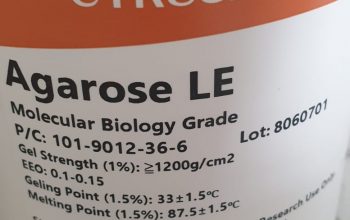General Information
AAT Bioquest iFluor ™ dyes are optimized for labeling proteins, in particular, antibodies. These dyes are glossy, photostable, and have minimal cooling proteins. They can be well excited by the main fluorescence laser lines instruments (eg 350, 405, 488, 555, and 633 nm). IFluor ™ 555 dyes have fluorescence excitation and emission maxima of ~ 550 nm and ~ 570 nm respectively.
The iFluor ™ 647 family has spectral properties essentially identical to those of Cy5® (Cy5® is the trademark of GE Healthcare). Compared to Cy5 probes. The iFluor ™ 647 family has much stronger fluorescence and higher photostability. Its fluorescence is independent of pH from 3 to 11. The characteristics make this new family of dyes a superior alternative to Cy5.

The 647 families have become an excellent replacement for Cy5 and Alexa Fluor® 647 labeling dye (Alexa Fluor® is the trademark of Invitrogen). They basically only require 2 simple mixing steps without a column purification necessary.
The kit has all the essential components for labeling ~ 2×50 ug of antibodies. Each of the two vials of The iFluor ™ 647 dye provided in the kit is optimized to label ~ 50 µg of antibody. The iFluor ™ 647 SE Protein Labeling Kit provides a convenient method of labeling monoclonal, polyclonal, or other protein antibodies (> 10 kDa) with iFluor ™ 647 SE.
PREPARING THE WORKING SOLUTION
Important
Heat all components and centrifuge the vials briefly before opening, and immediately prepare the required solutions before starting your conjugation. The following protocol is for a recommendation.
Protein working solution (Solution A):
To label 50 µg of protein (assuming the target protein concentration is 1 mg / mL), mix 5 µL (10% of the total reaction volume) of Reaction Buffer (Component B) with 50 µL of the target protein solution.
Note
If you have a different protein concentration, adjust the protein volume consequently, to make ~ 50 µg of protein available for your labeling reaction.
Note
To label 100 µg of protein (assuming target protein concentration is 1 mg / mL), mix 10 µL (10% of the total reaction volume) of Reaction Buffer (Component B) with 100 µL of the target protein solution.
Note
Protein must be dissolved in 1X Phosphate Buffered Saline (PBS), pH 7.2 – 7.4; if the protein is dissolved in glycine buffer, it should be dialyzed against 1X PBS, pH 7.2 – 7.4, or use Amicon Ultra-0.5, Ultracel-10 Membrane, 10 kDa (cat # Millipore UFC501008) to remove free amines or ammonium salts (such as ammonium sulfate and ammonium acetate) which are widely used for protein precipitation.
Note
Impure Antibodies or Bovine Serum Albumin Stabilized Antibodies (BSA) or gelatin will not be well labeled.
Note
For optimal labeling efficiency, a final protein concentration range of 1 to 2 Mg / mL is recommended, with significantly reduced conjugation efficiency unless of 1 mg / mL.




